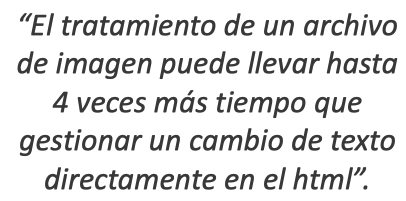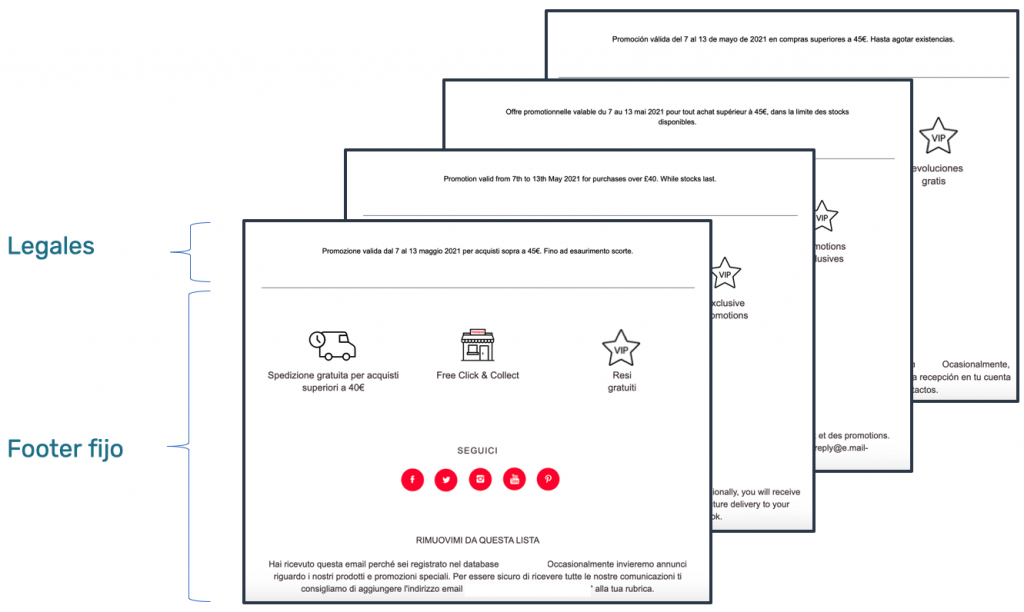Tips for managing content in International Email Marketing Campaigns


One of the consequences of the advance of the digitalisation of marketing and sales in companies is internationalisation. As a result, e-commerce, CRM and digital marketing departments face the challenge of developing and managing content adapted to each market and managing international email marketing campaigns and other channels.
In the case of email marketing, the complexity of managing campaigns to different markets (countries or geographic areas) is compounded by the production and review times, which are usually very short. In the following lines we are going to present some ideas regarding how to achieve optimal management of an international email marketing programme.
Text in html instead of image
One of the bottlenecks in the process of preparing an email marketing campaign is the review and change phase. At this stage, last minute changes often occur which affect the translated copies in the different language versions (texts, prices, legal information, etc.) and it gets complicated when text changes have to be made to image files. and the programming date is imminent. It should be borne in mind that processing an image file can take up to 4 times longer than managing a text change directly in html. If we choose to use html texts whenever possible, the management of changes will be much faster and more agile and will avoid an extra workload, also reducing the chances of making mistakes.


It is advisable to establish a direct channel of communication between translators and developers in a shared work environment, where any changes are reported to all involved and are easily accessible. We can work with a project manager or even a shared excel sheet in the cloud.
Using shared content in the submission platform
It is a general principle of project management to leave as many elements as possible fixed, i.e. free from processing or manipulation. We need to make better use of the technology platform and optimise the management of common content between regular campaigns. Most platforms have a Shared Content functionality, which consists of host blocks of content that can be used in different campaigns as needed.

This resource is very useful for hosting campaign headers and footers, as well as menus, logos, social networks, contact details, etc.), but you can also go further and use it to host common content that can be used in more than one campaign, such as promotional banners, service modules or ecommerce advantages, or even dynamic and personalised content such as a cross-selling, birthday campaign or loyalty programme. The main advantage of relying on Shared Content is that, when there is a change of content in any of the aforementioned elements, it will be replicated in all the pieces (transactional emails, automations, commercial campaigns) that contain it.
Now, in promotional periods, where there are conditions applicable in short periods of time (sales, promotions, black friday), it is preferable that the legal texts are in a separate module from the shared footers and that they are treated as another text element of the campaign.
